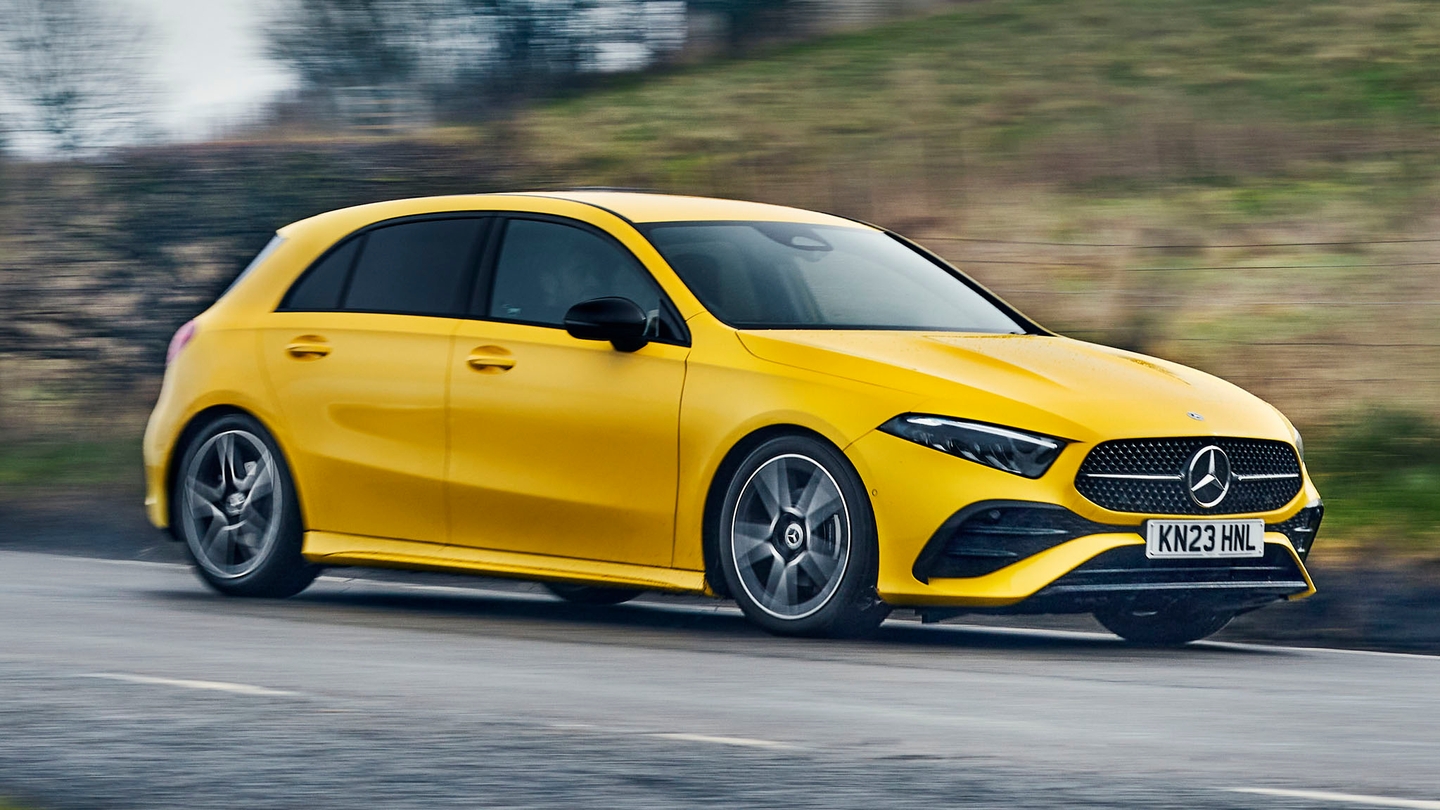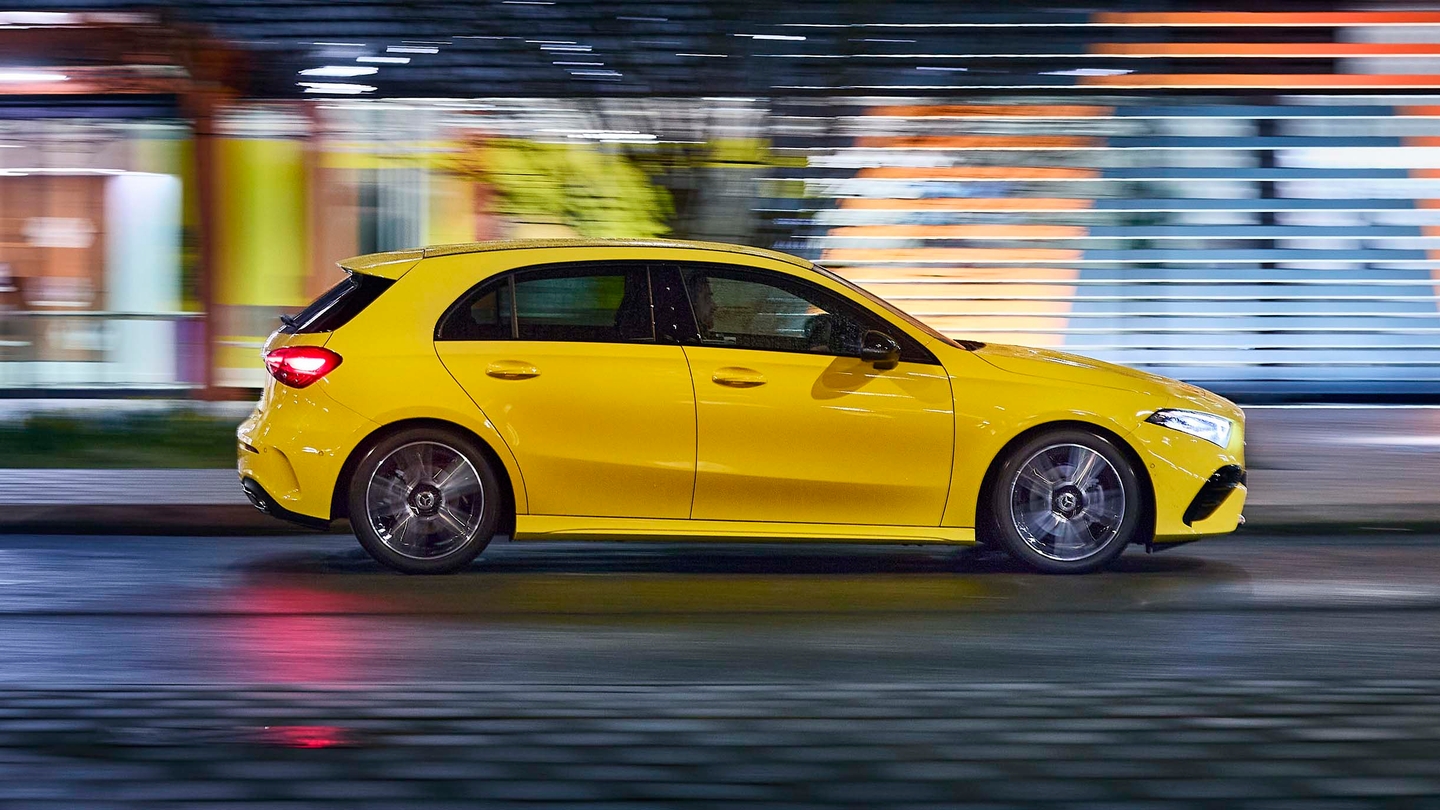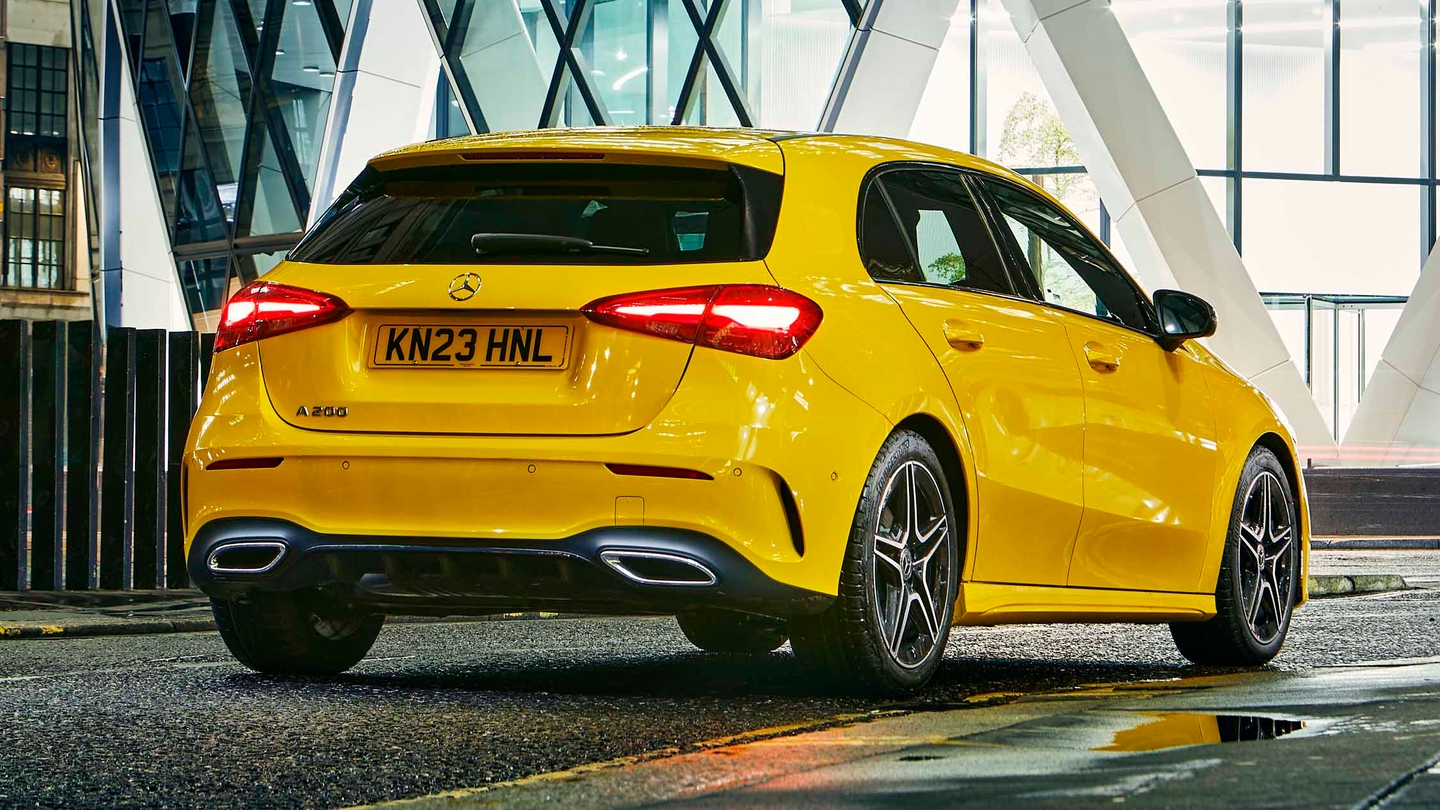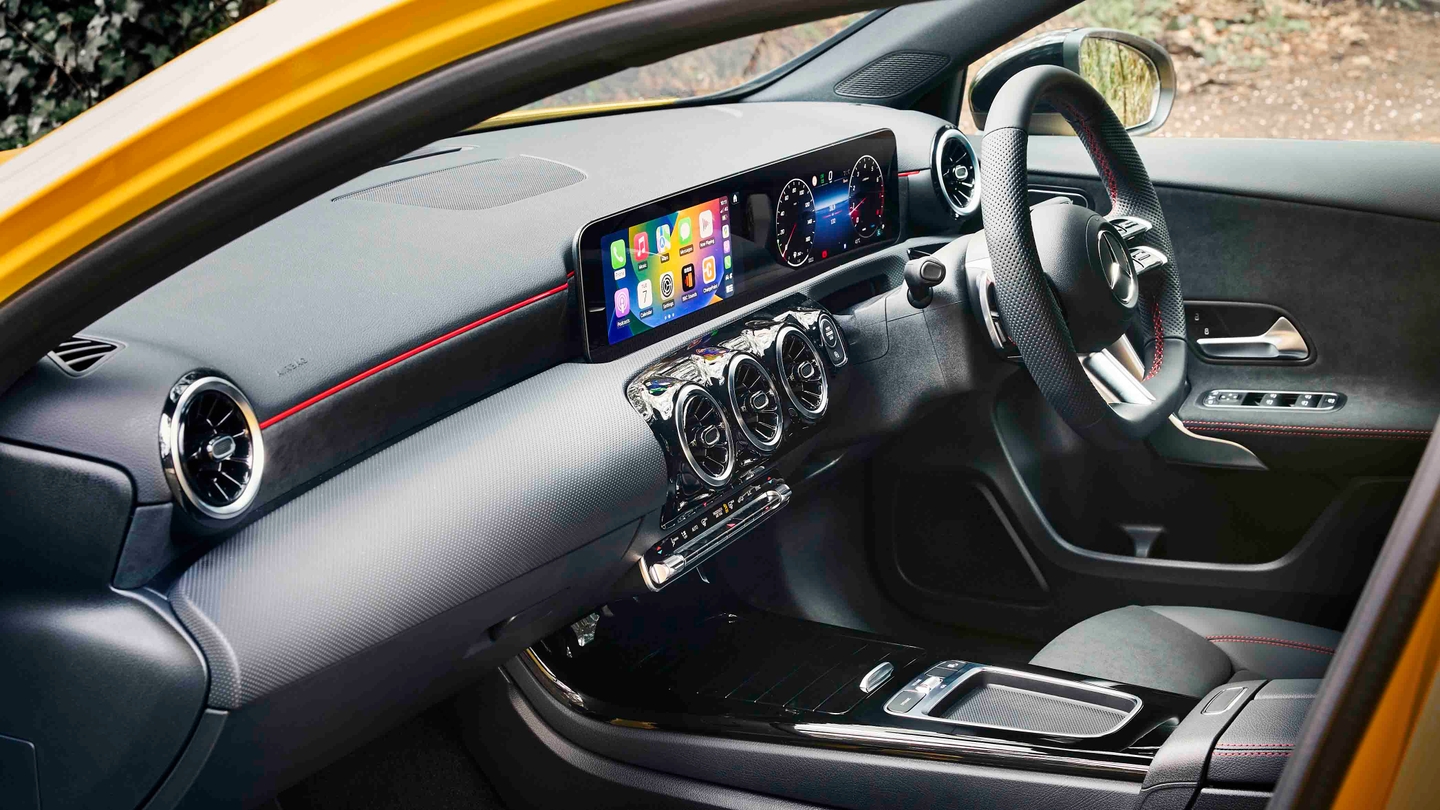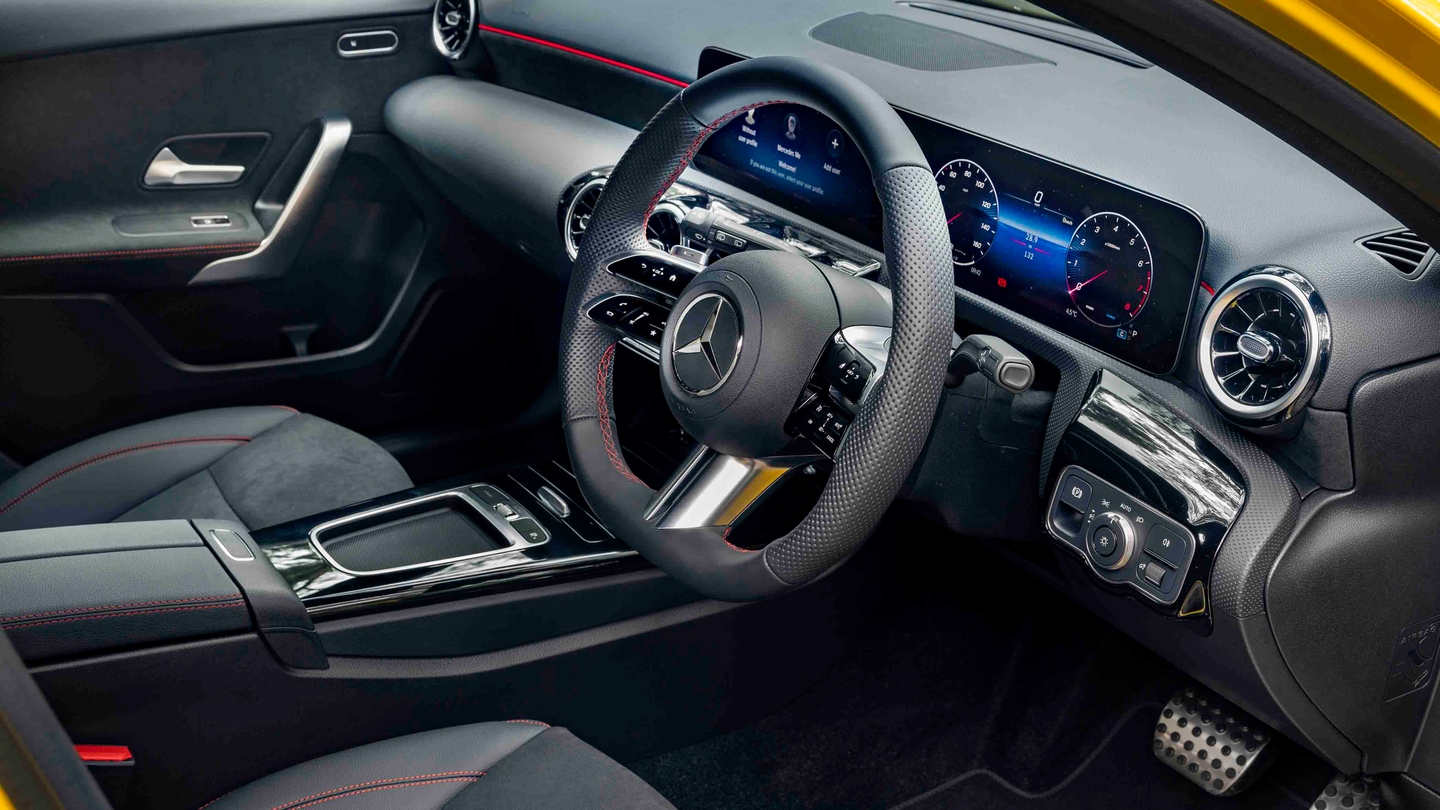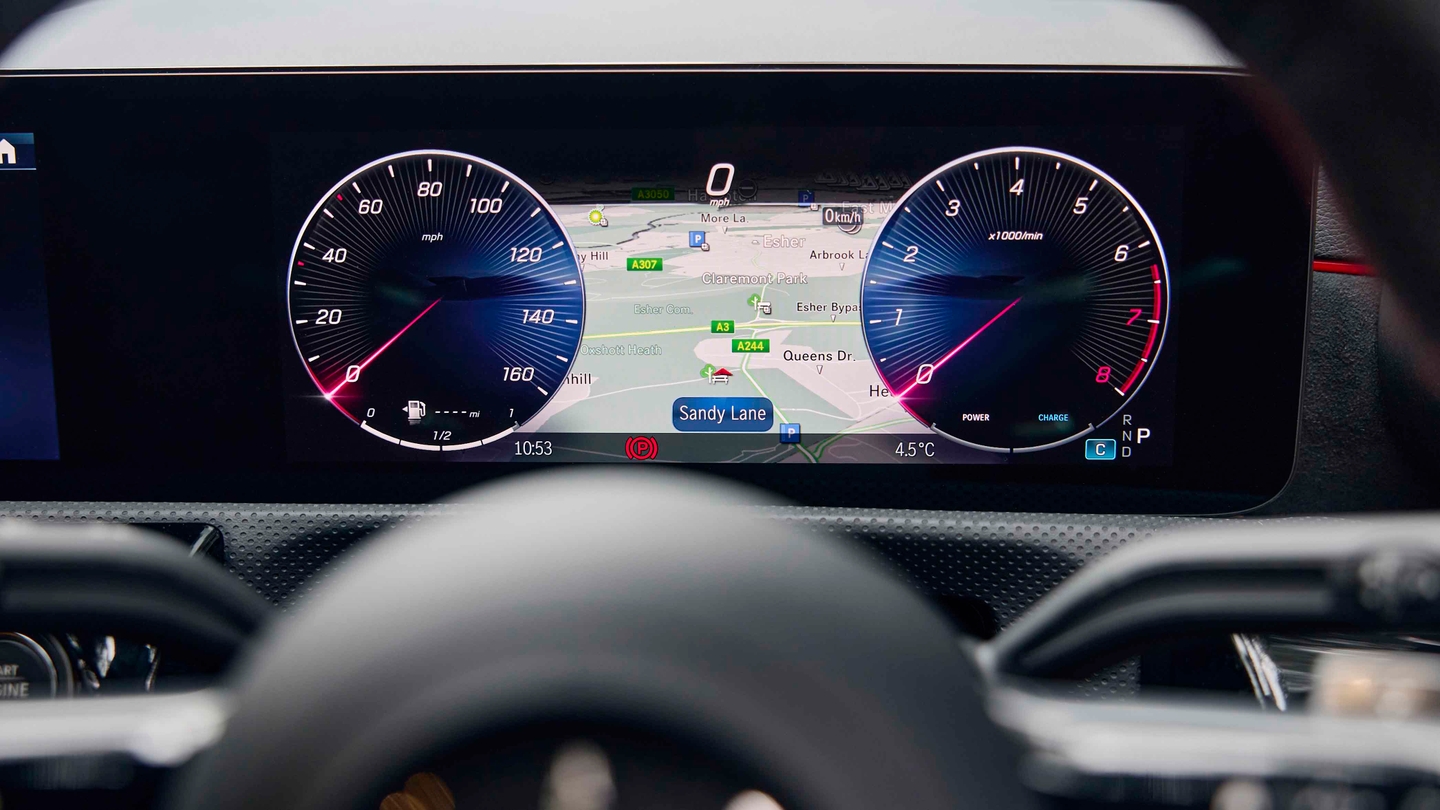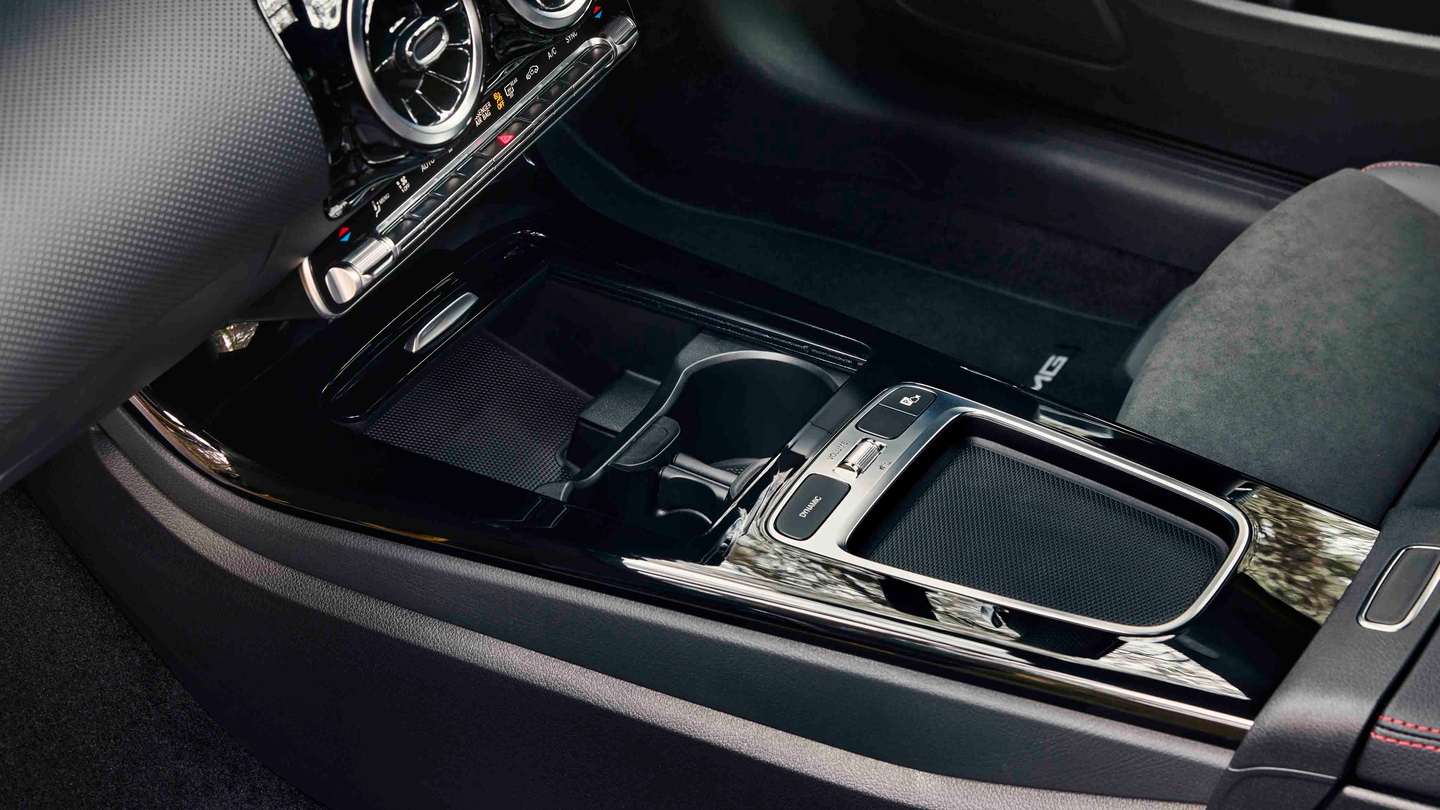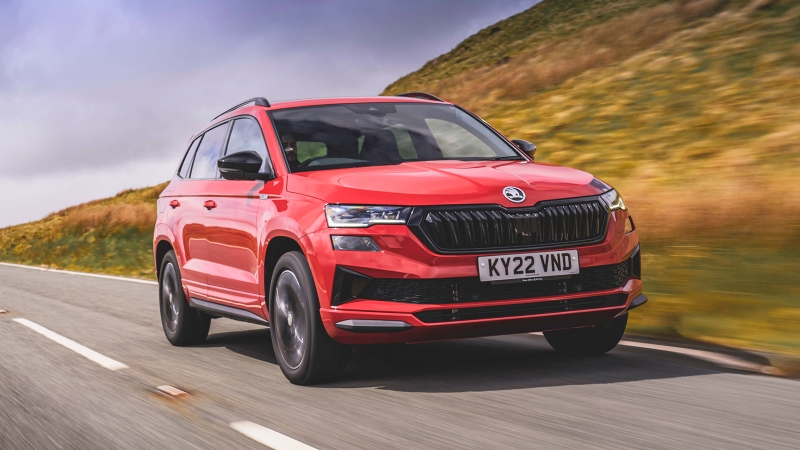
Mercedes A-Class engines, driving and performance
Gallery
How does the Mercedes A-Class drive?
Provided you’re not planning to attack your favourite back road, the A-Class is easy to drive. The steering is accurate and the suspension does a good job of ironing out poor road surfaces. You will notice more pronounced body roll than the level-cornering BMW 1 Series, especially during rapid changes of direction, but it’s a fair price to pay to avoid the BMW’s constant jittering over scruffy roads.
Similarly, there isn’t a great deal of feedback communicated to the driver via the wheel. This makes the extra weight that’s added to the steering wheel as you turn it further feel somewhat artificial. If you remember to drive this car in a relaxed manner, however, you simply won’t be bothered by the less-than-perfect steering.
Is the Mercedes A-Class comfortable?
Broadly speaking, the A-Class is comfortable. The suspension soaks up bad bumps and scruffy surfaces, dramatically reducing the number that make it into the cabin. Combined with the light, accurate controls, this is an easy car to cover hundreds of miles in – provided you’re not stuck in one of the stiff rear seats.
Refinement is good, with a little less tyre and wind noise than you’ll get in the 1 Series. The tradeoff, however, is that the A-Class’s engines are a little louder than those used by BMW and Audi, making themselves more obvious if you jab the throttle.
What’s the best Mercedes A-Class engine to get?

There isn’t a bad engine in the A-Class lineup, so you’d be perfectly justified in selecting the basic A180 petrol, or the A180d diesel if you’re a long-range driver. Both are willing and responsive, and only start to feel a bit underpowered when you absolutely floor the throttle.
The A200 petrol and A200d diesel are more relaxed for more of the time, with the extra shove helping them get up to motorway speeds even more effortlessly than the entry-level models.
Higher up, the A220 and A250 petrol engines, and A220d diesel engine add even more performance but are fairly uncommon. This is especially true on the nearly new market, because Mercedes phased these options out around 2021. We’d save the expense, however, because the A200 and A200d engines are cheaper and still quick enough.
If you have the ability to charge your car at home or at work, the A250e plug-in hybrid has an impressive electric range of more than 40 miles. This is probably enough to cover most commutes and could see you covering very few miles on petrol power. It is quite expensive and has a smaller boot, however, so make sure it’ll fit into your lifestyle before selecting this version.
Buyers looking at the A35 AMG and A45 AMG are unlikely to be cross-shopping these models against lesser A-Classes. They’re much faster and more aggressive than other engines, and get upgraded brakes and suspension to cope with the prodigious performance.
The A35 AMG sounds sporty, is really fast on regular roads and is a little bit more engaging than the similarly minded Audi S3 and BMW M135i, but it’s not as bloody-minded as something like a Ford Focus ST or Honda Civic Type R. It swaps some of that ultimate excitement for the duality of B-road blasting and motorway comfort.
Or, there’s the fiery A45 AMG which is pretty much the fastest hatchback you can buy. It’s a muscle car for the Morrisons car park, a hammer rather than a scalpel, but still carves up corners thanks to a mechanical diff. There’s even a drift mode if you fancy being a yob at your local racetrack.
Mercedes A-Class performance

As we’ve mentioned, the entry-level A180 and A180d engines are both more than a match for the car. They complete the benchmark sprint from 0-62mph in around 10 seconds and are pleasingly responsive to pedal inputs. The only shortcoming here is a tendency to let the engine revs flare on automatic versions if you suddenly ask for more acceleration.
The 0-62mph dash falls to around eight seconds for A200 and A200d models, which makes these cars feel effortless in most situations. The A220 and A220d chop this down to seven seconds, and the A250 down to a shade over six seconds. While you will notice the extra shove of these upgraded models, they make little tangible difference in day-to-day driving other than pushing the price up and the economy down, so we don’t think the upgrade is worth it.
With 218hp, the A250e plug-in hybrid is fairly brisk, taking just 6.6 seconds to hit 62mph from a standstill. It feels even faster around town speeds thanks to the lightning-fast reactions of its electric motor. Like the upgraded petrol and diesel engines, however, this version is more expensive to buy than lesser A-Classes, and you lose some boot space to the battery.
The A35 AMG and A45 AMG are in a very different league to the rest of the lineup. These cars are serious high-performance models that are just as happy posting record-breaking lap times at your local track as they are pootling to the shops. The 0-62mph sprint is completed in under five seconds on the A35 AMG and in less than four on the A45 AMG, which places both these cars among the ranks of the fastest hatchbacks ever made.






























